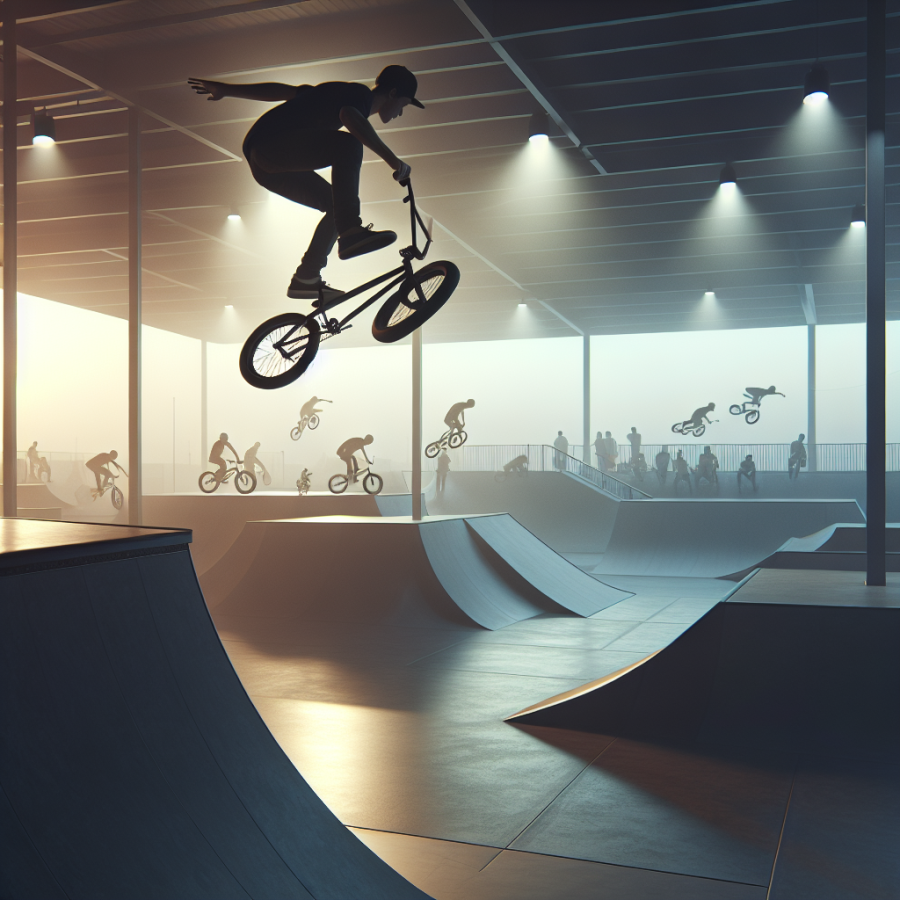The Intoxicating Adrenaline: Understanding the Thrill Aspect of BMX
BMX, also known as Bicycle Motocross, is no ordinary bike-riding endeavour. This extreme sport is not just about hopping on a bike and pedaling - it dictates a particular lifestyle, embodying the freedom of expression and a flat-out refusal to live by societal norms. One of the standout features of this sport is the ‘thrill factor,’ mostly attributed to the adrenaline rush, a feeling that most BMX riders chase.
The intoxicating adrenaline rush that one experiences while performing a BMX trick has a profound psychological backstory. Let's delve into the science behind it. When a person senses danger or a high-stress situation, our bodies instinctively respond by releasing adrenaline, a hormone that prepares us for the threats we might need to confront. This hormone boosts performance by accelerating the heart rate, increasing blood flow to muscles, and enhancing focus - all factors which help perform these daring stunts.
BMX riders often talk about the adrenaline rush they get when mid-air or undertaking risky moves. For them, it's a unique yet enticing mix of fear and excitement. It's the thrill that keeps them pushing beyond their boundaries, attempting new tricks, and encountering more challenging obstacles. Indeed, it seems like an addiction - an addiction to adrenaline, the driving force behind every audacious BMX trick.
Adrenaline isn’t the only factor that extensively contributes to the extreme stunts that are signature to BMX. The next critical component is skill. Acquiring BMX skills can be a gradual process, requiring constant learning and practice. Firstly, a rider should be proficient in bike handling, which requires balance, agility, and coordination. Then comes the mastery of techniques, acquired through an understanding of principles such as gravity, speed, and trajectory.
The balance between adrenaline and skill is the secret behind an exciting and successful BMX stunt. Too much adrenaline and too little skill can result in calamities, and too much skill with a lack of adrenaline may fail to push a rider to test their limits. Therefore, a thrilling BMX ride represents a perfect harmony of adrenaline and skills.
However, adrenaline-based sports such as BMX are not without their repercussions. The risks involved in performing these feats are high, and accidents, unfortunately, are common. Therefore, it's crucial for riders to wear protective gear, follow safety precautions, and limit their stunts according to their skill levels.
Read also:
Mastering the Fairways: Everything You Need to Know About Golf
Mastering the Craft: An Analysis of Skills Required in BMX Riding
BMX biking is more than just a hobby; it's a way of life immersed with high adrenaline, thrills and a high level of skills. To master this craft, certain specific expertise is necessary, which this blog will delve into.
Physical Fitness:
BMX riding is a highly physical sport that demands strength, agility, and endurance. It is not just the legs that need to be strong, but the entire body - arms, chest, back, and core. Riders need to have excellent cardiovascular fitness, as races can be demanding, and a good deal of stamina is required to perform tricks, evade obstacles, or stay ahead of competitors.
Balance and Coordinary:
Another critical skill in mastering BMX riding is balance. Riders need to maintain control over their bike at high speeds, navigate tight turns, and land correctly after airborne tricks. Along with balance, coordination is equally important. A good eye-hand coordination is necessary to execute tricks or avoid accidents.
Understanding of Mechanics:
Knowledge about the functioning of the bike can make a big difference in BMX riding. Understanding gearing, brake systems, tire pressure, suspension and balance can help a rider optimize their bike for their style of riding. It's part knowledge, part intuition – all helping to deliver a more seamless ride.
Resilience:
BMX riding is a sport full of ups and downs – both literally and metaphorically. Each rider is going to take a spill at some point, and the ability to get back up, dust off, and get back on the bike is essential. Mental resilience plays a huge part in this, as does a certain level of physical toughness.
Trick Mastery:
BMX is known for its breathtaking tricks, and mastering these requires endless practice and a considerable amount of skill. From bunny hops to 360 flips, mastering these tricks requires a firm understanding of balance, speed, and timing.
Bike Control:
Full control over the bike is crucial in BMX. This skill includes the ability to judge the right speed for an approaching jump, knowing how to position the bike in the air, or adjusting your body weight to navigate a tight corner. Bike control is a combination of many skills, including balance, strength and understanding of mechanics.
Risk Assessment:
Finally, an often overlooked but crucially important skill in BMX riding is risk assessment.




